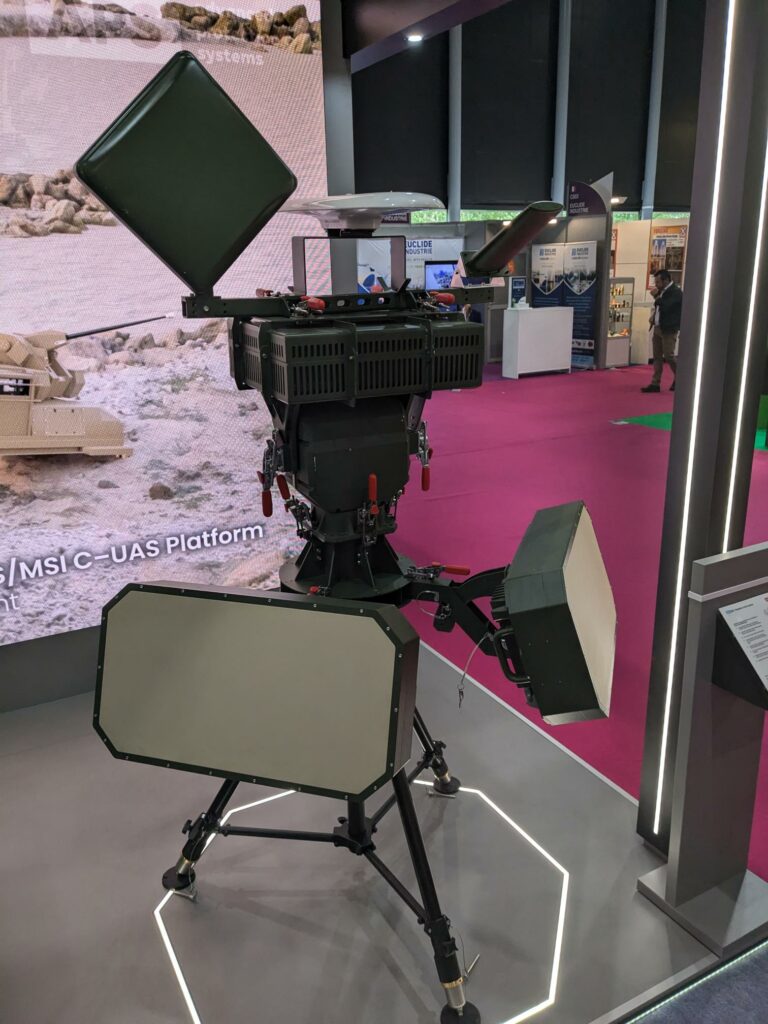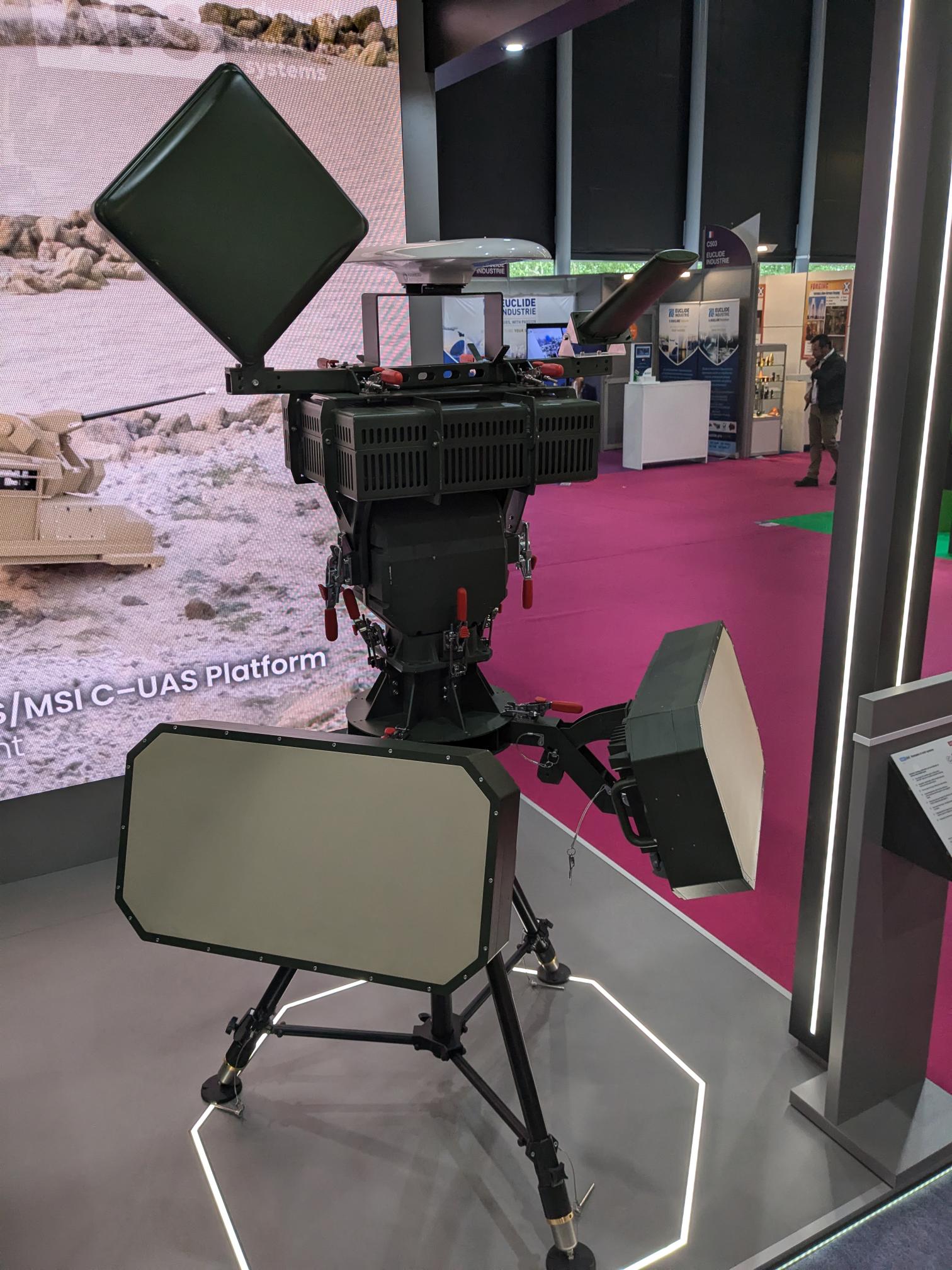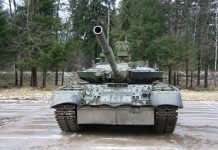Polish radar specialist APS is looking to leverage its modular and flexible business approach, combined with a determination to stay ahead of the short-range airborne threat from hostile unmanned aerial vehicles (UAVs), to expand its business.
Based in Gdynia on the Polish coast, APS was established just over eight years ago, but its ambitious growth plans have already seen the company grow from 18 employees three years ago to a workforce of around 180 today, of which 65 to 70% are scientists or engineers. The company thus has a sizeable research and development department that doesn’t stand still.
“We have customers all over the world, and every customer’s got a very unique requirement,” explained Dr Arun Arumugam, business development director at APS, during a recent interview with ESD at Eurosatory 2024.
“The top three things that I’m very passionate about is that the technology is phenomenal and it is battle proven; that is absolutely crucial,” said Arumugam. “The second thing is that, as a business, we are very open to partnerships. And we can’t do everything by ourselves; we need to bring in experts, we need to bring experience into the business and we need to bring the right ecosystem with us in order to deliver technology that meets the demands of our end users. And, of course, finally, what I think is very, very impressive is the openness and the ability and the appetite for finding out what else we could do best, what else we could do better. And the openness of understanding the drone threats, understanding what challenges we have, and how we can meet those needs.”
APS has a particular specialisation in producing 3D multiple-input multiple-output (MIMO) radars that can very accurately detect and track aerial targets, in particular distinguishing small UAVs from birds. A key attribute of APS’s flat-panel radars in the regard is their very high refresh rate, giving them the accuracy to provide a firing solution and the ability to detect Class I to Class III (micro to small) UAVs out to a range of 6 km.
The company has additionally developed a series of complex algorithms that use data such as radar cross sections, signal-to-scatter ratios and micro-Doppler effects to classify the targets that the radars have detected.
The company’s leading offerings are the FIELDctrl family of 3D MIMO radars; its SKYctrl counter-unmanned aerial vehicle (C-UAV) systems, which add a jamming capability and electro-optics alongside the 3D radars; and its CyView command-and-control (C2) software, which is used to optimise the use of the SKYctrl system. Among its client base, APS has already provided its SKYctrl system to the armed forces of Poland and Ukraine.
A key partnership for APS in recent years has been its teaming with UK defence system integrator MSI Defence Systems, whose Terrahawk Paladin pallet-based counter-UAV system combines a hard-kill effector in the form of a 30 mm MK44 Bushmaster chain gun with APS’s radars, soft-kill effector (jammer) and CyView C2 system, while also featuring electro-optical systems.
“When we work successfully with partners, we hope that success can continue and remain sustainable and, where there are opportunities to continue collaborating with them in different regions, we would always do that,” Arumugam explained. “But we will always find new partners and new inroads to certain users in countries where existing partnerships may not necessarily exist, in which case we would formulate new partnerships through different routes or through new routes.
“But we’re not the sort of company who would necessarily want to completely go tangential to create something that’s already there in the market,” he added. “We would want to have certain USPs [unique selling points] in order to justify the investment and ability to have new products, etc. International collaboration is everything for us; international collaboration is key to expansion into new markets in new countries and new regions, and we are very open to that.
“So we are very versatile and agile in that respect,” said Arumugam. “We would work with local partners to undertake take that. And there’s also a certain level of content that perhaps needs to be brought in locally, so perhaps the integration might need to be done locally, the integration of the radars and sensors onto a vehicle, [for example], so they would undertake that. So we’re very flexible, but on the flip side of it we’ve got customers who’ve said, ‘Please do everything for us and just deliver us the final solution’, in which case we do that as well.”

The evolving use of small UAVs on the battlefield, as evidenced by their constant presence in the current conflict in Ukraine, is a threat that APS is on the forefront of countering.
“The way adversaries use drones, and the way they find ways of striking a very prime target, is evolving all the time, so we have to stay ahead of the game,” said Arumugam, adding, “We have to evolve, and we are very responsive to that.”
Arumugam noted, for example, that APS developed an omni-directional jammer to counter first-person view (FPV) UAVs in response to an armed forces customer asking for a system that would provide protection for troops working in trenches or momentarily dismounted from a vehicle.
While a drawback of using such jammers to provide a ‘protective bubble’ over deployed troops or vehicles can be a loss of communications, given that such jammers necessarily jam all relevant frequencies, APS is already working on a solution to this issue.
“In about a year’s time we will have the ability for the end users to select the frequencies that we should not jam,” said Arumugam. “It’s not programmable by them, but they will be able to select from a list, for example, so that’s a model that we’re working on.
“At the end of the day it all depends on what the end users want; we have to react to what users want. There’s no point having a product that’s not going to be fit for purpose on the battlefield, so we’re very sensitive about that; we’re very cognisant of that the technology has to stay ahead of the game.”
With regard to APS’s business with the local Polish armed forces, Arumugam noted, “They’re a very successful organisation in responding to the protection of airspace. That concept of air defence protection is a multi-layered approach: there’s no silver bullet, there’s no one technology that will protect all layers of the airspace, so what is important is to have a network-centric system. And we’re very proud to say that with SKYctrl we’re integrated within the Polish armed forces to provide very-short-range air defence (VSHORAD) protection: the only VSHORAD counter-UAV system that is currently in place with the Polish armed forces. That’s a very good success story.”
Arumugam also pointed out the role that SKYctrl plays in providing point air defences for larger, higher-tier air defences.
“You’ve got really expensive, multi-million-pound assets on the ground, highly valuable, very effective systems on the ground that are protecting the higher layers of the airspace, but the question then becomes ‘Who’s protecting them?’ Because these drones are flying several centimetres above the ground to maybe a few hundred metres above the ground and they are completely vulnerable to this,” he noted. “So what is important is for SKYctrl to provide that protection, so we kind of defend the defenders. Those defenders are absolutely crucial in the protection of airspace, but they need to also be protected, and so we protect, for example, the Polish and German Patriot air defence systems along the Polish borders.
“And it needs to be network centric, in order to provide the coverage area that base protection demands. One thing that SKYctrl does really well is that our CyView C2 command-and-control software allows networking multiple SKYctrl units to each other and the ability to have manual and automatic configuration of controlling the sensors and the effectors that are used within that [system]. That’s very, very important technology.”











